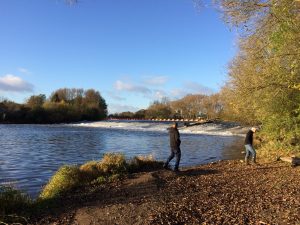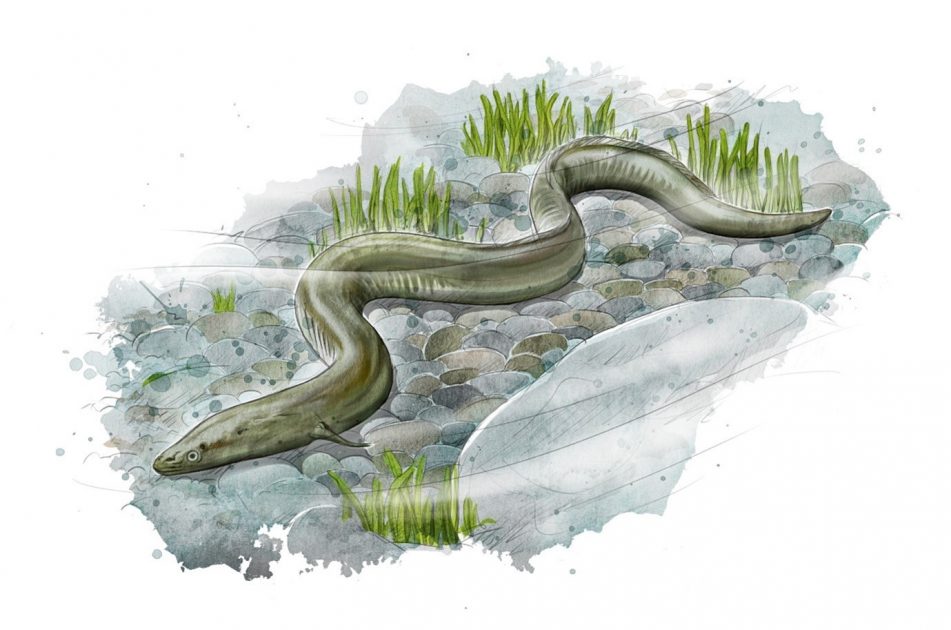
We love the ‘All About’ series, published on the Severn Rivers Trust website. These blogs have been written by Unlocking the Severn volunteers and apprentices, so we figured we’d share them here too! See the original blog on the Severn Rivers website HERE.
Written by Peter Savage, the Waterways Environment Apprentice on the Unlocking the Severn project. Pete explains what’s so ‘speci-eel’ about the European Eel!
Introducing the amazing European Eel
The European eel, Anguilla Anguilla, has an amazing life cycle. They spawn, then the young hatch in the Sargasso Sea in the Atlantic Ocean. The larvae then make their way over to Europe using the Gulf Stream and enter rivers when they have morphed into the second larval stage (known as glass eels). They spend many years living in freshwater as yellow/white bellied adult eels with a dark back. Then they morph again into silver eels before they begin another epic journey back to the Sargasso. It is here that they spawn before dying.
The idea that European eels begin their life cycle around the Sargasso Sea wasn’t considered until early in the last century. Their origin story was put forward when transparent eel larvae called “leptocephalus” were first recorded in the area. The location of where they spawn has been confirmed in recent years, but the European eel continues to provide us with mystery: even today the spawning behaviour of the European eel has never actually been witnessed.
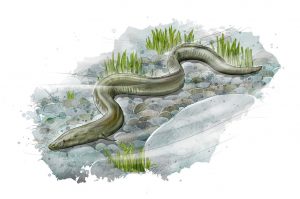
Illustration of a European eel. Artwork by Steve Hall.
Friend or foe?
My first experience of eels was when I first went coarse fishing at the age of 8 in the Norfolk Broads, and eels were seen as a pest! Most fishing trips resulted in my dad and I catching at least two or three of what we called “bootlace eels” (they were so small they resembled little bootlaces). Eels were so numerous, and they had a habit of taking anglers bait and swallowing the hook instead of swimming off with it. If you didn’t notice the tiny bites and strike instantly then you would have huge difficulties unhooking them and would probably lose your hook!
Although once seen as a pest by anglers, they are extremely important ecologically. They are a vital food source for many predators that live in UK rivers as they have a high fat content. The young arrive at the time when young birds and predatory fish require nutrition to aid their journey to adulthood. They are also a renowned favourite food source of endangered animals like bittern and the Eurasian crane.
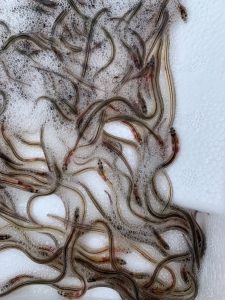
Glass eels in a tray ready for relocation. Volunteers assisted with moving glass eels as part of the Severn Conservation Taskforce.
Declining Numbers
Despite thinking that eels were numerous when I was young, we now read about how their numbers have been declining fast over the last 20 years. There are many reasons for this, and they seem to be all too familiar: overfishing at sea, pollution, climate change, dredging and barriers to migration. Similar factors that are also causing the numbers of all migratory fish in the UK to struggle population-wise.
Unfortunately, there is also a large black market for the young eels, which enter rivers like the Severn en masse during April and May. For decades during the spring, poachers have accessed the banks of the lower Severn in Gloucestershire at night and taken large amounts of glass eels to be eventually sold in Asia as a delicacy for the table.
Eels are now listed as endangered, and it is illegal in the UK to either take them for food or relocate them, unless you have a licence. This year the Sustainable Eel Group, assisted by the Severn Rivers Trust and an army of volunteers, relocated over 1 million glass eels in the river Severn to locations above barriers giving them a better chance to make their way upstream. This will help the young eels find refuge away from predators and safe habitats to live their adult lives. Once in freshwater the European eel will typically stay between 7 and 25 years before making their way back into the sea and to their spawning grounds the other side of the Atlantic Ocean about 4,000 miles away.
Some hope for the future?
Eel numbers across the country are very low compared to years gone by, but we’re lucky that the river Severn still has a good number of eels arriving in the spring, and in recent years the Unlocking the Severn project has installed fish passes at some of the larger barriers in Worcestershire. We’re pleased to report that eels have been spotted swimming upstream past the viewing window in one of these fish passes. Recently one of these passes was drained for maintenance, and several eels were seen swimming amongst the rocks in the base, possibly finding refuge inside the fish pass. There is a very realistic threat of this species becoming extinct in our lifetimes. With people becoming more and more aware of the plight of the eel, the presence of organisations like the Sustainable Eel Group and the Rivers Trusts, and projects like Unlocking the Severn removing more barriers to migration, the hope is that we will once again see large numbers of these fish returning to our rivers.
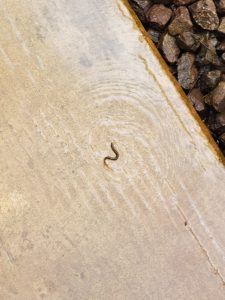
Eels spotted in the new Diglis fish pass. When draining the fish pass in Worcester for maintenance, it was so encouraging to see the presence of eels swimming through the water.
Want to find out more?
For more information about the amazing life cycle of the European eel please visit: https://www.unlockingthesevern.co.uk/our-river/european-eel/
For more information about the Sustainable Eel Group please visit: https://www.sustainableeelgroup.org/


